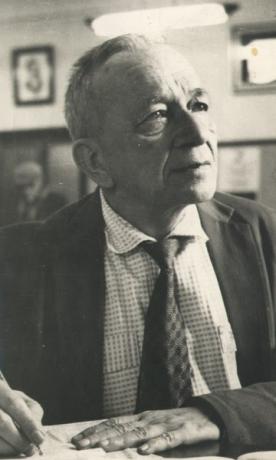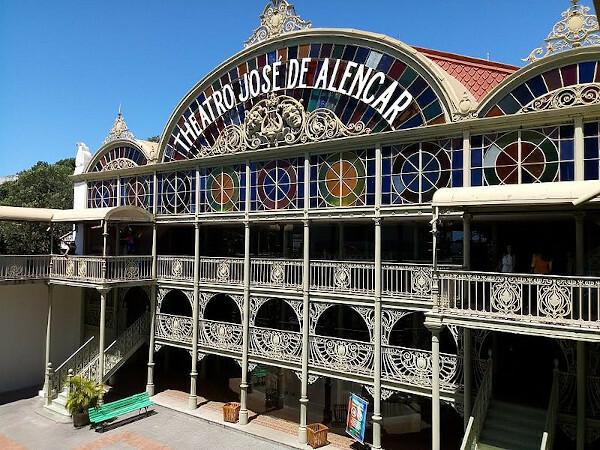Haroldo de Campos, Brazilian writer, was born on August 19, 1929, in São Paulo. Your first book — the possessed's self — was published in 1950. Two years later, the writer graduated in Legal and Social Sciences at the University of São Paulo (USP). That year, in partnership with Augusto de Campos and Décio Pignatari (1927-2012), created the magazine Noigandres (1952-1962), a vehicle for the dissemination of the concrete movement.
The poet, who died on August 16, 2003, in São Paulo, produced works characterized by the verbivocovisual aspect, that is, composed through the harmony between word, sound and image. Thus, the call “poem object" it is carried out by valuing the space on the page.
The author, one of the founders of concretism, won eight Jabuti awards, in addition to the Octavio Paz Award (Mexico) and the title of doctor honoris causa by the University of Montreal, Canada.
Read too: Guimarães Rosa – important representative of the third modernist phase
Biography of Haroldo de Campos
![Haroldo de Campos, in the cover photo of his book The second white rainbow, published by the publisher Iluminuras.[1]](/f/278a1720e39683a1191bfd00e1c40e97.jpg)
Haroldo de Campos was born on August 19, 1929, in the city of São Paulo. In addition to being a poet, he was a translator and literary critic. His initial literary production is related to the 1945 generation. However, in 1950, he published his first book — the possessed's self — which has features surrealists. Student at the Faculty of Law of the University of São Paulo (USP), the poet graduated in Legal and Social Sciences, in the year of 1952.
That same year, with Augusto de Campos and Décio Pignatari, created the magazine Noigandres, vehicle used for the foundation of the concrete movement. Thus, he participated in the National Exhibition of Concrete Art, in 1956, in the city of São Paulo, and in 1957, in Rio de Janeiro. Furthermore, from 1960 to 1967, he wrote for the periodical Correio Paulistano and, in 1962, he wrote his rehearsal most famous — “On translation as creation and as criticism” — in which he brings the revolutionary concept of transcreation.
Do not stop now... There's more after the advertising ;)
With assistance from the Guggenheim scholarship, Haroldo de Campos started his doctorate degree, whose theme is the work Macunaíma (1928), by Mário de Andrade (1893-1945). Thus, in 1972, he completed his doctorate in Letters at USP. The poet and translator was also visiting professor at the University of Texas, United States, in 1971, 1978 and 1981, and full professor at the Catholic University of São Paulo (PUC-SP), in the sector of Communication and Semiotics, until 1989.
The author, who Died inAugust 16, 2003, in São Paulo, managed to bridge the gap between literature and visual arts, in addition to innovating in translation theory. His studies, too, contemplated the Barrocco, a style whose influence can be seen in his concretist work. In addition, he translated (or transcribed) texts from:
- homer (8th century BC Ç.)
- Mallarme (1842-1898)
- Goethe (1749-1832)
- Mayakovsky (1893-1930)
- books of Bible
The poet received the following awards and tributes:
- Jabuti Award (1991) — for the translation of the work Qohelet/What-Knows: Ecclesiastes
- Jabuti Award (1992) — Literary Personality of the Year
- Jabuti Award (1993) — for the work The best poems by Haroldo de Campos
- Jabuti Prize (1994) — for the translation of the work Zeami's Hagoromo
- PhD title honoris causa (1996) — University of Montreal, Canada
- Jabuti Award (1999) — for the work chrysantime
- Octavio Paz Award (1999) — Mexico
- Jabuti Award (2002) — for the translation of the work Iliad, of homer
- Jabuti Award (2003) — for the translation of the work Iliad, of Homer (volume 2)
- Honorable Mention of the Jabuti Award (2004) — for participation in the translation of the work Ungaretti — from one star to another
Literary Characteristics of Haroldo de Campos
Haroldo de Campos is one of the founders of Brazilian concretism, which has the following features:
- Breakup with the poetry intimate
- Search for the materiality of words
- verbivocovisual perspective
- Metalanguage
- Verses are not mandatory
- Objectivity
- Multi-significant image
- Defense of the object-poem
- Enhancement of page space
- Nonlinear word arrangement
- Experimental character in structuring the poem
Read too: Ferreira Gullar – creator of neoconcretism
Works by Haroldo de Campos
- Self of the possessed (1950)
- Art on the horizon of the probable (1972)
- Morphology of Macunaíma (1973)
- star chess (1976)
- Significance: almost heaven (1979)
- Galaxies (1984)
- The education of the five senses (1985)
- chrysantime (1998)
- The machine of the world rethought (2000)
- intermillenniums (2009)
- Metalanguage & other goals (2010)
- the second white rainbow (2010)
See too: Ana Cristina Cesar – important representative of marginal poetry
Poems by Haroldo de Campos
In the poem “Amago do Omega”, from 1955, the poet uses resources such as:
- O pun (âmThego/ ômandga)
- O double meaning (“â Mage oh mega”, “a crystalline body” and “a melee”, “zero” and “zenith”)
- The visuality (the persistence of the eye in “a OlhO/ a OurO/ a OssO” and the re-creation of zero in “ero/ Z ao/ enit”)
- The alliteration (Pétala PairPtrailing eyelashes/ PtherePebra)
- The assonance in the repetition of the vowel "o"
Thus, the poem realizes its proposalverbivocovisual, that is, the use of the word in search of sound and as a raw material for the creation of images that appear donada (ex-nihilo):

In the poem “nascemorre”, from 1958, in the visual aspect, it is possible to identify two triangles (or pyramids) divided, with one of the parts inverted, as if it were a kind of mirror or reflection. The theme is centered on the contrastbetween birth and death, opposition eliminated by the idea that one action is a consequence of another, that is: if it is born, it dies, if it dies, it is born. Hence the use of the particle “re”, which gives the idea of repetition, and “des”, which suggests the return.
As for the sound aspect, it is forged by the repetition of the words "is born" and "dies", therefore, in the reproduction of the sounds of "sc", "rr", "a", "e" and "o", which intensify the idea of repetition of the act of being born and dying:

Image credit
[1] Illuminations Publisher (reproduction)
by Warley Souza
Literature teacher


